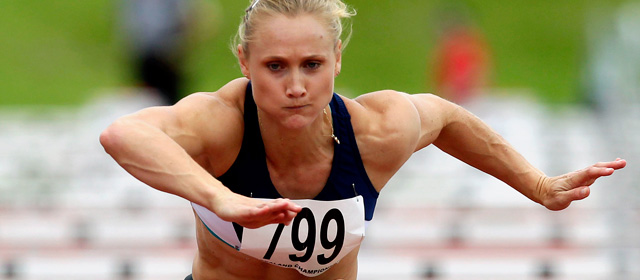Story summary
Athletics includes competitive running, walking, jumping (such as long jump and high jump) and throwing (including discus and shot put). The national governing body is Athletics New Zealand, to which local clubs are affiliated.
Beginnings of athletics in New Zealand
The first athletics competitions in New Zealand were held at rural sports days and Caledonian (Scottish) games, which were held from the 1840s. There were usually foot races and throwing competitions, as well as more unusual events such as climbing greasy poles or wheelbarrow races.
In the second half of the 19th century pedestrianism (professional running and walking) became popular. There was a split between amateur (unpaid) and professional (paid) athletics, and there were separate competitions for each.
1870s to 1914
Amateur athletics grew from the late 19th century, and harriers and cross-country running became popular. Some notable athletes of this time include:
- sprinter Jack Hempton, who equalled the world record for 100 yards in 1892
- walker Harry Kerr, who, competing for Australasia, won New Zealand’s first Olympic medal in 1908 (a bronze in the 3,500-metre walk).
1919 to 1939
New Zealand regularly sent teams to the Olympics, but athletes tended to lose form during the long sea voyage to northern hemisphere competitions. The two runners who won Olympic medals between the world wars – Arthur Porritt, who won bronze for the 100 metres in 1924, and Jack Lovelock, who won gold for the 1,500 metres in 1936 – were both based in England.
Women were discouraged from competing in official athletic competitions. There were no women’s athletic events at the Olympics until 1928 and women’s world records were not recognised until 1936. However, runners including I. Johnson, Elaine Martyn, Thelma Kench and Doreen Lumley ran world-class times.
1950 to 1969
The British Empire Games (later the Commonwealth Games) was held in Auckland in 1950, and led to increasing numbers of people participating in athletics.
Yvette Williams became an international star when she won gold medals at the 1952 Olympics and the 1950 and 1954 Empire Games (in long jump, discus and shot put).
Several successful runners were coached by Arthur Lydiard, who developed new ideas about how to train runners. They included Murray Halberg, who was the first New Zealander to run a mile in less than four minutes and who won the 5,000 metres at the 1960 Olympics; and Peter Snell, who broke the world record for the half-mile and mile.
1970 to 1990
In the 1970s and 1980s there was a worldwide boom in running. Notable New Zealand runners of this period include Dick Quax, Rod Dixon, John Walker (who broke the world record for the mile, and won an Olympic gold in the 1,500 metres in 1976), and woman distance runners Lorraine Moller, Anne Audain and Allison Roe (who won the Boston and New York marathons in 1981).
Into the 21st century
By the start of the 21st century fewer people were involved in athletics clubs, though many people participated in fun runs, or ran for fitness.
Three New Zealanders won the mountain running world championships. Valerie Adams won two Olympic golds for shot put.





